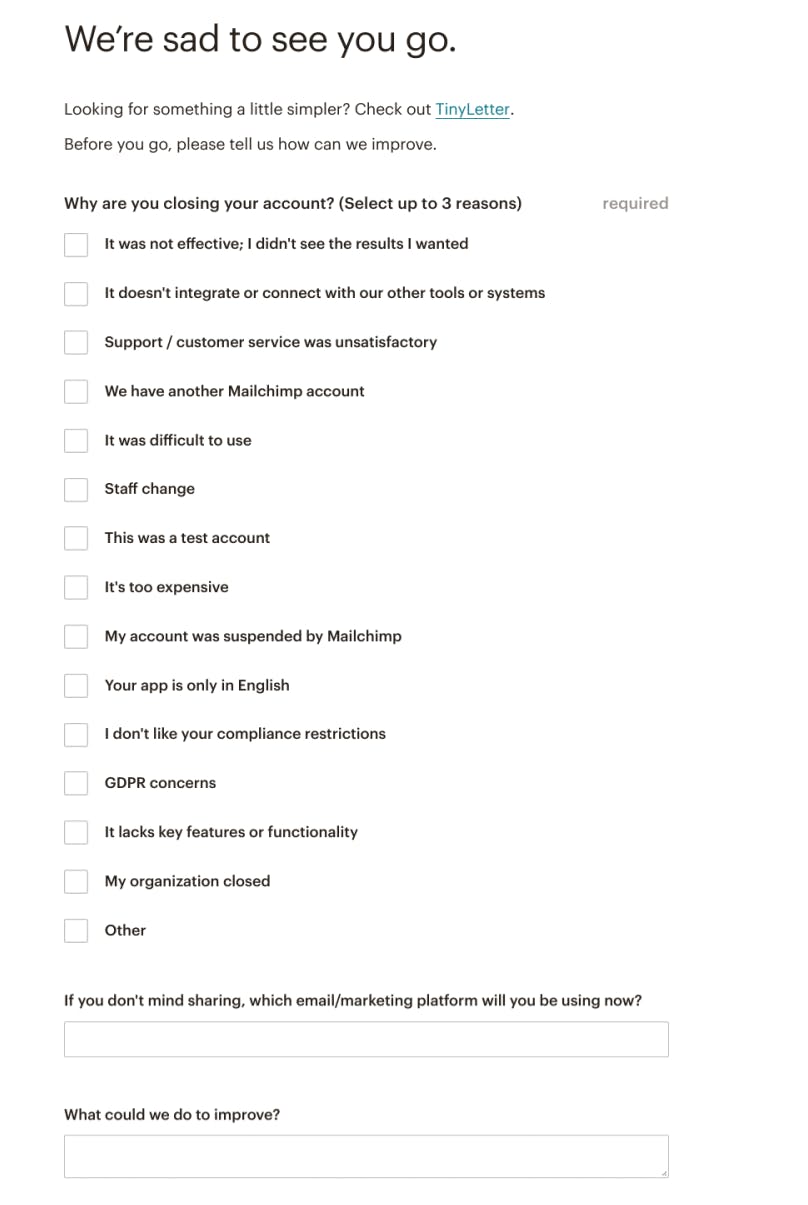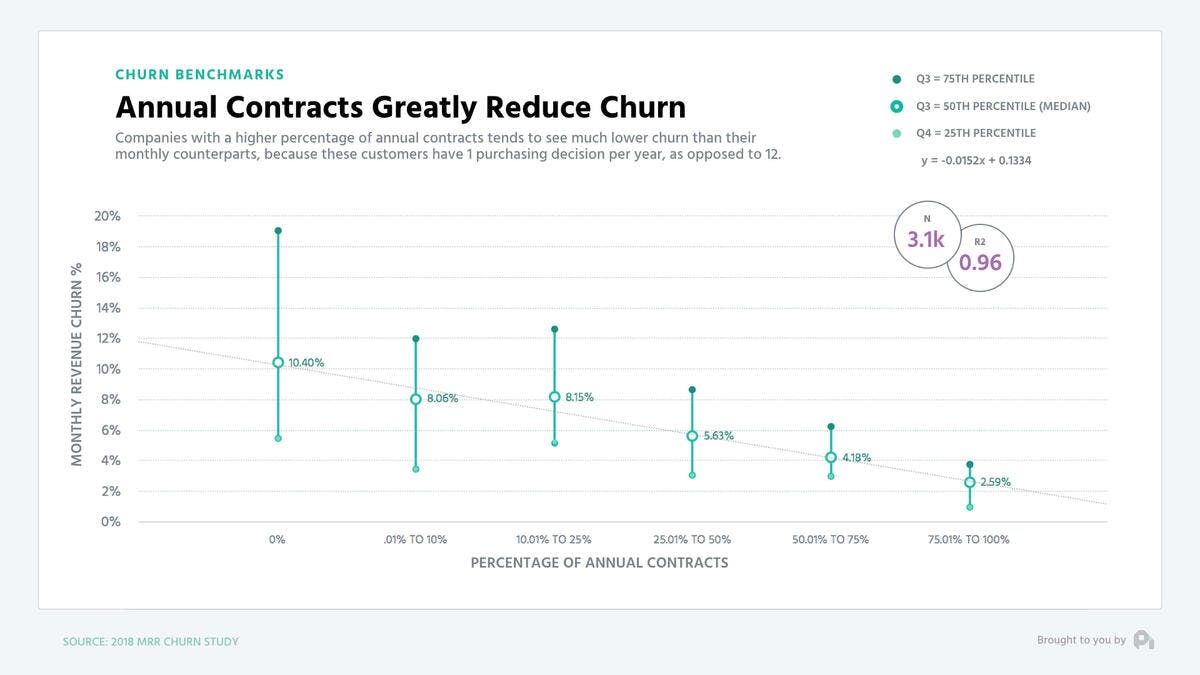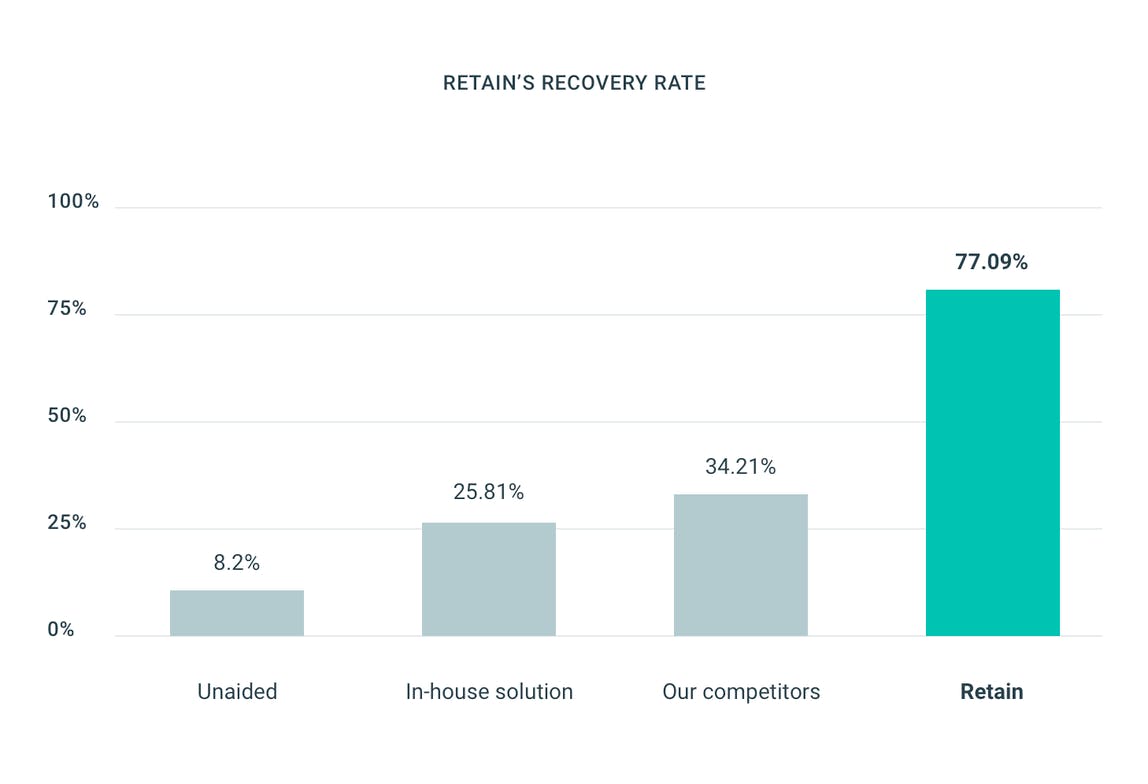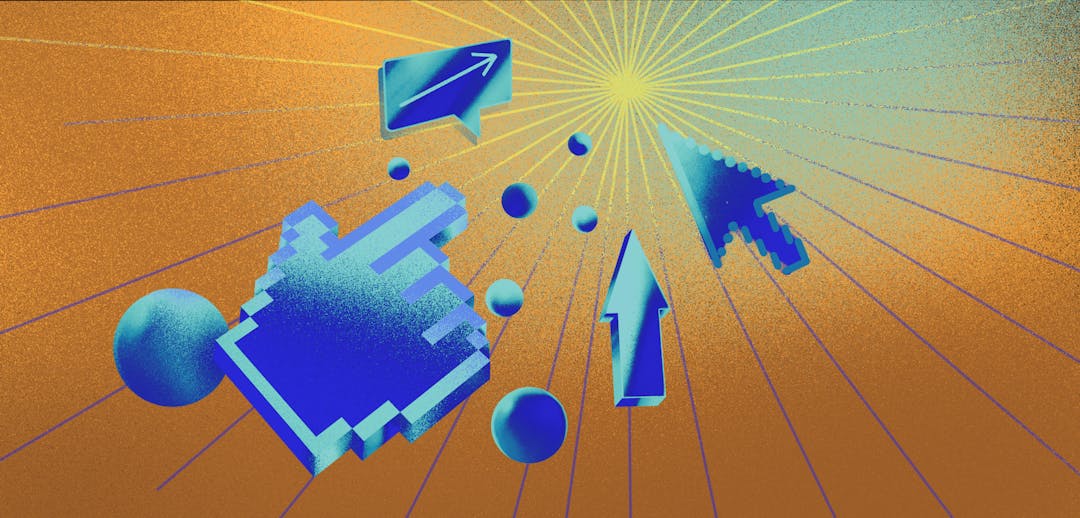We all know that churn (aka customer attrition) is the not-so-silent killer of SaaS businesses. In fact, according to Tomasz Tunguz, the median SaaS business loses approximately 10% of its revenue to churn every year.
When all your revenue is tied to recurring relationships, anything you can do to stem the loss of customers will help your company thrive in the long run.
Churn prevention is your proactive strategy for keeping customers around. It involves looking at the underlying reasons for churn and then formulating a plan to combat issues that may lead to churn before they happen. In this article, we’ll talk through how to build your own churn-prevention strategy.
With that strategy in place, you’ll be able to keep your current customers happy and engaged with your service.
What is churn prevention?
Churn prevention refers to the strategies companies use to minimize the number of customers and volume of revenue that is lost to different types of churn. Proactive churn prevention helps eliminate potential issues before they occur and keep customers happy as your company grows. This typically consists of retention strategies designed to lower attrition rates and maintain strong revenue levels.
Why churn prevention is so important
As a SaaS company, you rely on recurring revenue to sustain and grow your business. Every customer that leaves is a hit to your MRR, which makes it harder to maintain a good LTV:CAC ratio. With a strategy to keep customers engaged with your service, you will depend less on customer acquisition, naturally reduce the problems that cause churn, and maintain healthy recurring revenue levels.
Churn prevention vs. churn reduction: is there a difference?
While churn reduction is a reactionary strategy, churn prediction and prevention involves looking at the underlying causes that lead to lost customers and addressing them proactively. Combined, these two strategies help you fight churn at every point along the customer journey.
The 6 common reasons customers churn
To prevent churn, you must understand why customers leave your service. The more you know about how churn occurs, the easier it is to build processes that alleviate potential issues.
There are a number of reasons a customer leaves your service, each requiring a different kind of solution. Here are six of the most common causes of churn.
1. You have poor customer fit
If you’re not bringing in the right kind of customers, it’s impossible to grow your business long term. Building quantified buyer personas and understanding their needs help ensure that every customer you acquire is a good fit for your product or service. A good customer needs to not only use the product but also get value from it.
2. Your platform doesn’t meet customer expectations
When a new customer purchases your service, they do so to accomplish a specific task or goal. If your product doesn’t meet your customers’ expectations, they will become frustrated with the lack of functionality and will churn. One of the primary functions of your value proposition is to match these expectations; failing to do so leads to churn.
3. Your competitor makes a better offer
Customers have any number of options to choose from when picking a provider. This competition is at the core of every market. When customers see more value in the service your competitors provide, they’ll churn. It’s important to understand where your company fits into the bigger market landscape.
4. The customer couldn’t reach their goals
Even if your service has all the right features and provides a seamless user experience, customers who cannot achieve their intended outcome will churn. It’s important to understand when a customer cancellation is outside of your control.
5. Your recurring subscription failed
Subscription payments are the crux of your business. Make sure to review the connection points between your merchant provider, bank, and payment processor to alleviate any issues. This type of churn is a purely mechanical failure of your tools that should be easy to avoid.
6. The customer’s credit card failed
Credit card failures due to exceeding a limit or the card expiring are referred to as delinquent churn. When a customer can’t make their recurring payment as a result of delinquency, such as a merchant or banking failure, that is involuntary churn. You should have stopgaps in place to ensure that these kinds of failures don’t occur.
These six reasons are some of the most common ways your customers can churn. Once you understand how and why your specific customers are churning, it’s easy to put processes and strategies in place to combat it.
6 proven churn prevention methods
Once you have a handle on why customers leave your service, it’s time to build a churn-prevention plan. Follow these six actionable tactics to keep your customers around and maintain healthy revenue levels.
1. Talk to your customers
Everyone who leaves your service will have a reason for doing so. Sending out an exit survey to churned customers is a great way to get answers. Whether it’s anonymous or it’s specific to individual customers, this is valuable information to capture for your churn analysis.
In this survey, include a few common reasons for cancellation, such as closed the business or switched to a competitor. Writing the reasons saves work for the customer, so they’ll be more likely to fill out the survey.
Here’s an example survey that offers 15 different reasons for cancellation:

Cancellation survey example via Appcues
It’s also a good idea to survey your current customers to learn why people choose to stay with your service. Think of this survey as an extension of your NPS, and use it to capture additional information on what parts of the customer experience are working well.
2. Review your target personas
Increases in your churn rate can be a signal that you’re not going after the right kind of customer. Use this as an opportunity to take a look at your buyer personas to make sure you’re targeting the most valuable customers for your business.
Use customer survey data and product usage data to identify which buyer personas are getting the most value from your brand. Once you’ve identified these priority customers, look at how and when they churn. If customers leave within the first 30- or 90-day period, that likely means there’s an issue with your onboarding process. If more-established customers are churning, that could be an issue with a recent update to your product or a lack of feature innovation.
With that information, it’s easier to anticipate which customer personas are at the highest risk for churn. As your company grows, your target customer is going to evolve. Regularly review and update your personas to connect with customers who are unlikely to churn.
3. Offer annual plans
Customers on an annual plan tend to stick around longer than those paying monthly. With an annual plan, customers tend to form deeper relationships with brands. The longer customers have to see the value your service provides, the more likely they’ll stick around.

Companies with more annual subscribers have lower monthly revenue churn.
If you’re not offering an annual plan, then this is the time to review your optimal pricing structure and make changes. With a more targeted pricing plan, you have the ability to attract different customers based on their willingness to pay and their commitment level.
An annual plan also gives customers a clear upgrade path as they evolve, which helps them feel like your service grows alongside their needs.
4. Communicate across all channels
The more interaction you have with customers, the stronger your relationships will be. You’ll be able to check in on how they feel about the customer experience and then provide information on how to overcome their issues with your product. Being able to anticipate and resolve these problems will help you prevent these customers from churning.
Open up multiple communication channels—in-app notifications, email, phone calls—to connect with customers. Having more than one channel gives customers options and tailors your message to their preferred communication method.
5. Send thoughtful recovery emails
A recovery email is a message you send to customers after they’ve canceled, to try and win them back. These emails are an opportunity to remind customers of the value your service provides so they see what they’re missing out on.
While building Retain, our revenue retention tool, we found that recovery emails save up to 77% of customers contacted through Retain’s dunning processes.

Retain recovery rates.
Including recovery emails in your churn-prevention plan is a surefire way to boost your win-back rates. Dunning emails aren’t just for reminding customers of actions they need to take in their account; they’re also a valuable tool for increasing customer retention.
6. Offer incentives for early renewal.
Customer incentives can help boost your retention rate. Look for ways to offer incentives that retain more of your customer base. Whether it’s offering lower available payments when they’re paid in advance or a lower price for your annual package, existing customers are more likely to renew if they’re offered a deal.
Just make sure you’re offsetting these discounts with expansion revenue. Expansion revenue helps you offset the negative effects of churn by upselling and cross-selling current customers to increase their lifetime value.
Use these strategies to retain more customers and increase your revenue over time. Combine them and test tactics and you’ll be set to reduce churn for your SaaS business.
Retain customers with world-class retention software
Building a solid churn prevention strategy is all about maximizing the value you deliver to customers and minimizing potential issues. Use this guide to minimize churn and you’ll help your business stay healthy and keep your customers as happy as possible.
If you’re looking for additional help on reducing churn, Paddle is here to help. Our industry-leading churn-prevention software has helped recover thousands of customers for hundreds of SaaS companies.




